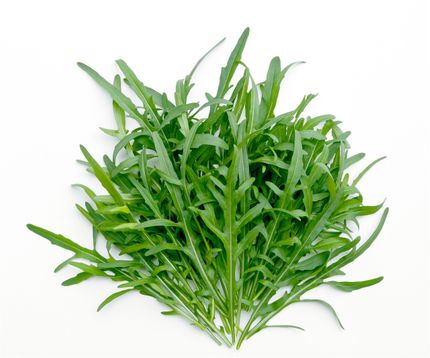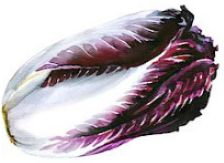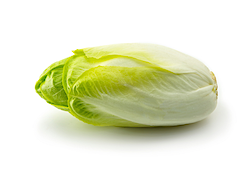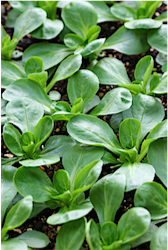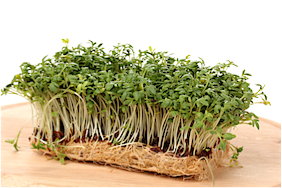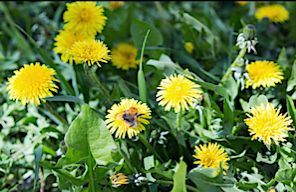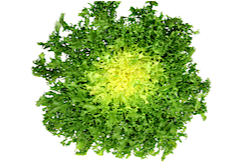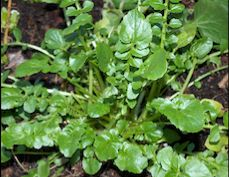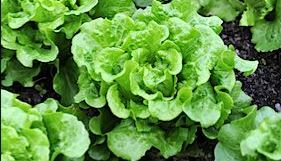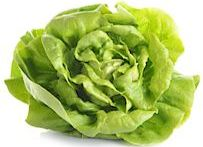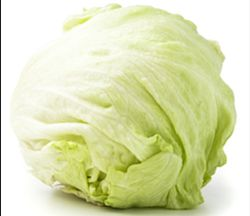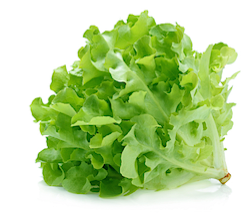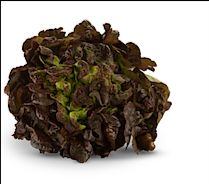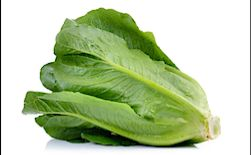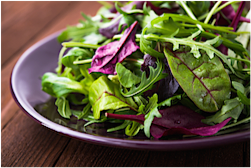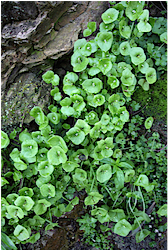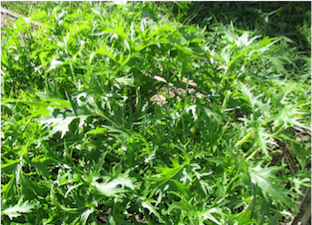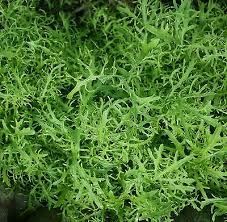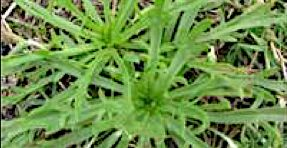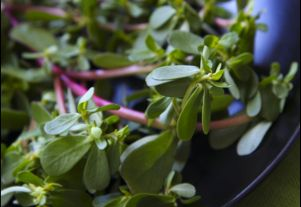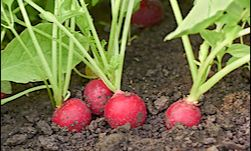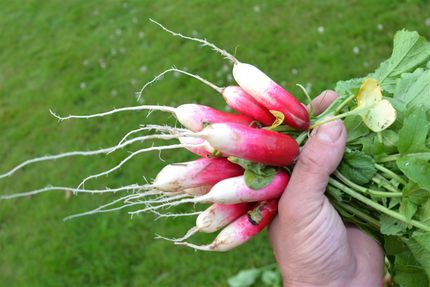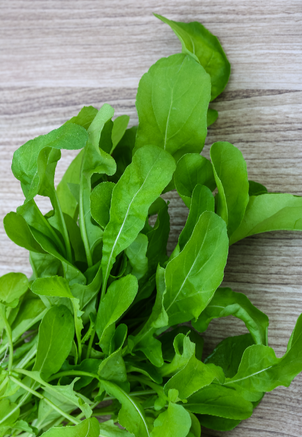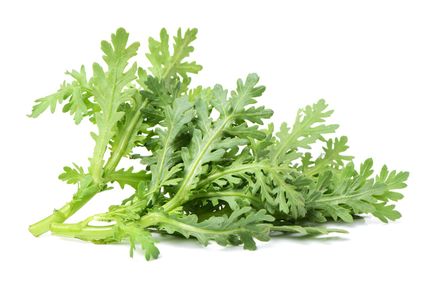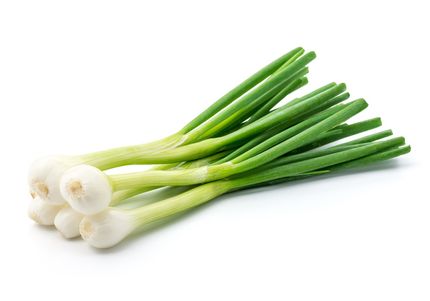The Miracle of Growing Food Regeneratively
Creating Local Food Security & Healthy, Vibrant, Regenerated Living Soil, & Nutrient Dense Food
VEGETABLE GROWING
The Vegetables in the next 9 Sections are Arranged in Groups According to their Characteristics
Salads – Arugula, Chicory, Corn Salad, Dandelion, Endive, Land Cress, Lettuce, Mesclun Mix, Miners Lettuce, Mizuna, Mustard, Plantago, Purslane, Radish, Rocket, Shungiku.
Tubers – Kumara (sweet potato), Oca, Potatoes, Ulluco
Seeds & Pods – Beans (Broad, Climbing French, Dwarf, Runner), Okra, Peas, Peanuts, Sweet Corn (Maize).
Greens – Amaranth, Broccoli, Brussels Sprouts, Cabbage, Cauliflower, Kale, Komatsuna, Leaf Beet, Mibuna, Pak Choi, Silver Beet, Spinach, Tatsoi.
Roots – Beetroot, Carrots, Celeriac, Daikon, Jicama, Kohlrabi, Parsnips, Root Parsley, Salsify, Scorzonera, Swedes (Rutabaga), Turnips.
Bulbs – Garlic, Leeks, Onions, Shallots.
Shoots – Celery, Florence Fennel.
Fruits – Cucumber, Eggplant, Kiwano, Melon, Peppers, Pumpkin, Squash, Tomatoes, Zucchini.
Perennial Vegetables – Artichokes (Chinese, Globe, Jerusalem), Asparagus, Rhubarb, Sea Kale, Yacon.
It has to be remembered that when following sowing times and other cultivation suggestions, these will vary around the world, so I have given simplified instructions, like “sow in early spring", or "plant out in early summer" and occasionally give the best months for both northern and southern hemispheres. If you are in doubt there is no substitute for asking and observing the locals when they sow and plant their crops, etc. Older men and women are a fund of knowledge; they are a valuable resource, so use them.
ECO & ORGANIC FERTILISERS:
When referring to ‘Eco’ or ‘Organic Fertilisers’ in this chapter, other than garden compost, I recommend you use what is available in your country.
New Zealand: I use an eco fertiliser - EF Natures Organic Fertiliser from ‘Environmental Fertilisers’ - http://environmentalfertilisers.co.nz/.
I personally prefer EF products, because they are minerally balanced according to Biological (Eco) farming and gardening principles and are often full of beneficial soil micro-organisms, which most other organic fertilisers do not contain. If you can find similar products in your part of the world I highly recommend them.
UK: there are the companies like ‘Eco Worm’ http://ecoworm.co.uk/
and ‘Symbio’ http://www.bioorganicgarden.co.uk/
Australia has companies like 'Eco Growth' http://www.ecogrowth.com.au/ and 'Batphone' http://www.batphone.com.au/
United States has companies like ‘AEA - Advancing Eco Agriculture’ https://www.advancingecoag.com/
and ‘ILA - International Ag Labs' http://aglabs.com/
and there are probably a lot more as well as similar companies in many different countries.
Google eco fertilisers and you should find such companies in your country. These fertilisers are referred to in the text as ‘Eco Fertiliser’
There are also more traditional organic fertilisers such as Blood & Bone, as well as Blood, Fish & Bone, which can be found in many countries. Other general organic fertilisers are Fish Meal, Sheep Pellets, Dried Chicken Manure, Alfalfa meal etc. These are what is referred to in the text when using the term ‘Organic Fertiliser’, which doesn’t include those specialised organic fertilisers, such as rock phosphate, rock potash, bone meal, dried blood, hoof and horn, seaweed meal etc., which are referred to where necessary. ‘Organic Fertiliser’ means in this work a general fertiliser with a range of nutrients. Most Eco and Organic fertilisers are used at 1 to 2 handfuls per square metre (square yard), but this may vary with different makes, so read the instructions on the packet.
Recipes:
I have also included yummy recipes for most of the vegetables to inspire you, not only to regenerate your soil and produce nutrient dense food, but also to use attractive recipes to make the best of the healthy vegetables you have grown.
GROWING SALADS
CONTENTS:
1. ARUGULA
2. CHICORY
3. CORN SALAD
4. CRESS BROAD LEAF
5. DANDELION
6. ENDIVE
7. LAND CRESS
8. LETTUCE
9. MESCLUN MIX
10. MINER’S LETTUCE
11. MIZUNA
12. MUSTARD
13. PLANTAGO STAR OF THE EARTH
14. PURSLANE
15. RADISH
16. ROCKET
17. SHUNGIKU
18. SPRING ONIONS
Aragula
ARUGULA (Diplotaxis tenuifolia)
Arugula (Wall Rocket) is a wild salad plant, a perennial form of Rocket native to Europe and Western Asia with the same taste as Rocket – peppery with a hint of mild garlic. It is smaller than Rocket with smaller leaves. In warmer areas, with mild winters, it can be grown as a perennial, but in colder areas it will probably die off in the winter unless it is in a protected corner of the garden. This is a good plant for growing in a forest garden, or a herb garden.
Soil & Feeding: Arugula is not too fussy, but if you want you can lightly fork in 1 handful of one handful of Eco or Organic Fertiliser, per square metre (yard).
Varieties: In catalogues it is usually just called Arugula, or fancy names like ‘Wild Italian Rustic’.
Sowing:
Arugula seed lasts 3 years. For early sowings, sow in boxes and plant out when the seedlings are 4-5cm (1½-2in) high at 10cm (4in) between the plants and 20cm (8in) between the rows. Successive sowings can be outside where they are to grow in drills 1½cm (½in) deep in rows 20cm (8in) apart, thinning to 10cm (4in) apart.
Growing:
Keep weeded, regularly watered and mulched down with 2cm (¾in) of grass clippings to conserve moisture and deter annual weeds.
Harvesting: These are ‘cut and come again’ plants, picking leaves on a regular basis.
Possible Pests and Diseases: As Arugula is a brassica, cabbage white butterfly caterpillars can attack it, but it is less likely if there are other bigger more tasty cousins around.
Radicchio chicory
CHICORY (Cichorium intybus)
Chicory is like a slightly bitter crisp lettuce, to which it is closely related. It can be used on its own or in a mixed salad.
Soil & Feeding: Chicory needs a rich, water retentive soil, so add one bucket of compost and two handfuls of Eco or Organic Fertiliser per square metre (square yard).
Witloof chicory
Sowing:
Chicory seed lasts 4 years.
For early sowings sow in boxes – especially for Witloof – so as to give it a long seasons growth. For Radicchio types sow outside anytime from late spring with successive sowing throughout summer into early autumn.
Growing:
Keep weeded and regularly watered.
Harvesting:
Pick Radicchio as and when needed. Leave Witloof until autumn, then cut the tops off and dig up the roots and push them into 25cm (10in) peat or leaf mould in a box and then cover the tops with another 25cm (10in) peat or leaf mould. Make sure the peat is packed down. Put the box in a warm place. Cover, or put in a dark cupboard. After 4-5 weeks the chicons will have grown to 15-20cm (6-8in) long. Remove them one at a time over several weeks, cutting them off from the roots as and when needed. The blanched leaves can be pulled off the head to be used in salad or dipped in salt and eaten with bread and butter as my father used to.
By using both Radicchio and Witloof, you can have chicory most of the year.
Possible Pests and Diseases:
Chicory is usually trouble free, although they may occasionally have aphids.
CORN SALAD (Valerianella locusta)
Corn Salad (Lambs Lettuce) has a characteristic nutty flavour, dark green colour, and soft texture. You can grow Corn Salad all the year round, but it is particularly useful as a winter salad crop, because it’s hardy and will stay fresh until spring in all but the hardest of winters. It’s fast growing and ready to eat in a few weeks.
Soil & Feeding:
One bucket of garden compost per square metre (square yard), lightly dug in will be enough for a good crop.
Corn salad
Varieties:
Verte de Cambrai: Fast growing, good taste.
Dutch Large Seeded: This variety has a slightly larger leaf than Verte de Cambrai and has a more upright habit, which makes it easier to harvest.
Sowing: Corn Salad seed lasts 5 years. The seeds are 2-3mm (3/32-1/8in) in size, but believe it or not they must be sprinkled onto the surface of the soil or seed compost and lightly pressed in, because they need light to germinate – so do not cover with compost! You can cover with clear plastic, polythene, or glass to keep the moisture in as well as letting in the light.
Growing:
Thin to 15cm apart and keep weeded.
Harvesting:
Harvest when plants have produced at least four pairs of leaves. If you pick the leaves carefully, or cut the leaves off just above the crown it will re-grow and give you another crop.
Possible Pests and Diseases:
None that we have encountered over the years.
CRESS BROAD LEAF (Lepidium sativum)
Cress is quick growing and has a peppery taste. It is usually grown as baby leaf in boxes to cut for salads or chopped as a garnish onto soup.
Soil & Feeding:
I would grow them in trays filled with good seed compost – see: chapter 8, ‘Propagation Techniques’ – Seed Compost
Sowing:
Cress seed lasts 5 years.
Sprinkle the seed onto the compost and then shake enough compost through an old kitchen sieve (the one used exclusively for gardening!) to just cover the seeds and water the tray from the bottom by placing in a sink or bigger container with a little water in until the surface of the compost is damp. Each day use a small mist spray to keep the compost moist until the cress has grown.
Harvesting:
Just cut what you need when 3-4cm (1-1½in) high. Possible Pests and Diseases: They grow too fast to get any diseases, except possible damping off, but if you have added Trichoderma granules to your seed mix and have not overwatered the seedlings, there should be no problem.
CRESS see: LAND CRESS
DANDELION (Taraxacum officinale)
For many this is just a weed, but the mild bitter leaves are a great addition to a mixed salad. Dandelion leaves contain Magnesium, Phosphorus and Copper, Vitamin A, Vitamin C, Vitamin E, Vitamin K, Thiamine, Riboflavin, Vitamin B6, Calcium, Iron, Potassium and Manganese. The French have cultivated varieties of dandelion, which they blanch, like chicory, by keeping the tops in the dark under a pot to produce pale more succulent and less bitter leaves. Personally I pick the ordinary green leaves from a cultivated patch in my herb garden to add to the salad bowl.
Soil & Feeding:
You can feed the soil as for growing chicory and plant some dandelion roots, but you may also have plenty of dandelions growing in and around your garden, or in the neighbourhood, which you can harvest on a regular basis. Dandelions are or course obvious contenders for forest garden planting.
Sowing:
To create a cultivated patch, the best way is to dig up some dandelion roots and plant them in prepared soil, rather than grow from seed, just because it’s quicker.
Harvesting:
Do not over pick the leaves as this will exhaust the plant; better to have several plants and pick leaves from different plants in succession, allowing the plants to recover.
Possible Pests and Diseases:
None that I know of.
ENDIVE (Cichorium endivia)
I have to confess I have only grown Endive a few times in my gardening career, but as I like a varied salad mix I will grow it more regularly, particularly for winter salads as it is hardier than lettuce and should grow through mild winters and frosts. Like Chicory it has a mild bitter taste, which is common for this family, which includes lettuce, dandelion, chicory etc.
Soil & Feeding: Endive needs a rich, water retentive soil, so add one bucket of compost and two handfuls of Eco or Organic Fertiliser, per square metre (yard).
Varieties:
Pancalieri Fine Cut: Finely cut lacy crisp leaves, with a mild nutty flavour Tres Fine: Finely cut lacy crisp leaves with a creamy heart. Slow to bolt. Easy to grow
White Curled: Upright growth. Tolerant of both hot and cold conditions
For winter cropping – Batavian Broad Leaved and Escarole are best.
Sowing:
Endive seed lasts 5 years.
Endive generally prefers cool or cold weather, so is an ideal salad for spring and late autumn. Endive doesn’t like transplanting, so wait till middle of spring to sow outside in rows 30cm (1ft) apart if you are going to cover with cloches, or 23cm (9in) apart, thinning to 23cm (9in) each way for deep-beds.
For winter types, sow as above in late summer.
Growing:
Keep weeded and watered. For winter varieties in colder areas, cover with cloches in late autumn. You can also blanch them by covering with large flowerpots (as long as the plants are dry) plugging the hole in the flowerpot, with clay or a small stone.
Harvesting:
You can pick the whole plant, or pick-and-come again.
Possible Pests and Diseases:
Endive is generally trouble free.
LAMBS LETTUCE see: CORN SALAD
LAND CRESS (Barbarea verna)
This is native of southwest Europe. The advantage of land cress is that it tastes almost as good as watercress, but is much easier to grow, and it does not need lots of water, but it does like watering frequently and is very slow to bolt. It’s also hardy enough to grow through our winters here in Nelson, NZ, so unless you have very hard winters, you can try growing it. Otherwise grow it during spring, summer and autumn.
Soil & Feeding: Although land cress is not water cress it still likes a good moisture holding soil, so mix in 1 bucket of compost + one handful of Eco or Organic Fertiliser per square metre (square yard).
Varieties:
As far as I know land cress is land cress, but also with names like Upland Cress and American Land Cress (because it is grown in Florida)
Sowing:
Land Cress seed lasts 5 years.
You can sow seeds in boxes for the first sowings of the year in late winter, early spring. Then I like to sow in an outside seedbed, in late spring, at the end of a vegetable bed, sown thinly in rows 4cm (1½in) apart; then transplant to their final location 10-15cm (4-6in) apart each way so they fill the bed. Don’t forget to sow in late summer to grow through the winter for winter salads in warmer areas.
Growing:
Keep weed free and water often.
Harvesting:
Pick the leaves regularly in succession and they will grow again. In the summer they will eventually go to seed, so re-seed with fresh ones.
Possible Pests and Diseases:
I have never had any problems, probably because land cress is closer to their wilder cousins than a lot of over bred vegetables.
LETTUCE (Lactuca sativa)
There are so many varieties of lettuce that you will find some you are bound to like. Some prefer the soft ‘butter head’ types that form a soft head.
Some people prefer the crisp headed ‘Iceberg’ types. Then there are the pointed crisp ‘Cos’ types. And finally a whole range of frilly red and green lettuces that you can pick several times, including the ‘Oak leaf’ types. We like to grow a range, just for the variety and hell of it!
Soil & Feeding:
Lettuces are not heavy feeders, so as long as the soil is rich in organic matter that is water retentive but well drained, that will satisfy them. If your soil is heavy clay or sandy, or just short of organic matter, then add one bucket of garden compost per square metre (square yard) mixed into the top 5-6 cm (2-2½in).
Butter Head type
Varieties:
Butter Head Types:
Mrs Simpson: A soft winter lettuce, with light green frilly leaves.
Summer Queen: A good bolt-resistant lettuce with soft round hearts.
Buttercrunch: A crisper, slow to bolt, version of a ‘butterhead’ with a crunchy texture that is not bitter.
Iceberg type
Frilly type
Oak leaf type
Cos Types:
Paris White: This is the one to grow if you like large crisp Cos types.
Tin Tin: This splendid ‘little gem’ type lettuce is high yielding with sweet tasting, crunchy leaves. Fast maturing from spring through to autumn, with good disease resistance. Slow to bolt.
Little Gem: My father’s favourite and ours. A small soft crisp hearting Cos type, ideal for two people. You can pack these in 15cm (6in) apart each way.
Cos type
Iceberg Types:
Great Lakes:
Another one we grow. It has large hearted, compact, crisp, frilly leaves. A slow to bolt summer variety.
Vivian: Has crisp, tightly bunched upright hearts, with good bolt resistance; good for summer growing.
Frilly Cut-&-Come-Again Types:
Lollo Bionda: A bright yellow green frilly lettuce, slow to bolt and ideal to pick and come again.
Lolita: An intense burgundy-red frilly lettuce, slow to bolt and ideal to pick and come again.
Oak Leaf Types:
Royal Oak Leaf: A green oak leaf with good heat tolerance, slow to bolt, ‘pick and come again’ type for summer growing.
Danyelle: A deep wine-red oakleaf lettuce – also great for baby leaves.
Biscia Rosa: An Italian bronze-red oak leaf.
Sowing:
Lettuce seed lasts 4 years.
For early sowings, sow in seed compost in seed boxes, from late winter to early spring and then plant out at 20cm (8in) each way when the seedlings are 5cm (2in) high, or in rows 30cm apart and 20cm (8in) between plants. Mid spring to late summer sow in an outside seed bed in rows 5cm (2in) apart and transplant when 5cm (2in) high. For winter crops in warmer areas, sow in late summer. If you have cold winters, sow in a glasshouse, or Polytunnel in late autumn for a winter crop.
Growing:
For softer lettuces, water regularly but best watered around the roots, not on top, to stop rotting. For 'Iceberg’ and ‘Cos’ types you can water into the heart.
Harvesting:
Pick some leaves off the ‘pick-&-come-again’ frilly and oak leaf types. With the rest cut the whole plant.
Possible Pests and Diseases:
Sparrows: Young seedlings can be eaten by sparrows, especially in the spring, they certainly do here, so you might have to cover with metal or plastic mesh until they are larger.
Slugs: can be a problem, especially when the plants are small. Use small saucers or other shallow containers with a 50/50 mix of beer and water, placed every 60cm (2ft) apart buried up to the rim. The slugs love beer and will crawl in and die happily at night. If it is wet weather you will need to prop a plate up over the saucer. Change the contents regularly.
Stem Rot: Some types of lettuce can get fungus and rot off. This can be largely avoided by careful watering around the plants, not on top of them. If you have continuing problems with this, then water the soil, before planting out seedlings with Trichoderma viride a predatory fungi that likes eating nasty fungi, see Section 13, ‘Pests & Diseases’ – The New Generation of Biological Products.
Mesclun mix
MESCLUN MIX
Mesclun Mix is a mixture of salad greens sown together. There are many varieties and mixtures. They are cut regularly with scissors for a great mixed salad. You can make your own mixes up, or buy a ready-made mixture.
Soil & Feeding:
I like to feed the soil with one or two handfuls of Eco or Organic Fertiliser, but only if the soil has had a heavy feeding crop previously.
Varieties:
Here are some standard type mixes you can buy already made up, or you can use them to adapted or make up your own mixes:
Standard Mix:
Corn Salad, Cress, Red Beet, Red Cabbage, Broccoli, 3 different Lettuces, Rocket and Spinach.
Mild Mix:
Mizuna, Tatsoi, Corn Salad, Chard, Red Orach, Kale Squire, Cress, Lettuce, Spinach, Red Kale and Chervil.
Mesclun Oriental:
Komatsuna, Mustard, Kale, Mizuna, Mibuna, Tatsoi, Pak choi, Red Cabbage and Green Broccoli.
Kale Mix:
Pink Stem, Cavolo Nero, Squire, Red Monarch and Red Russian.
Lettuce Mix:
12 varieties of red and green Lettuces.
Sowing:
Prepare a plot that is reasonably weed free and lightly sprinkle the seed mix onto the surface then using your fingers mix the seed into the top 1cm (⅜in), pat down and gently water with the rose on your watering can. In warmer areas sow it in late summer for a winter crop. For cold winters sow in late summer in a glasshouse or Polytunnel.
Harvesting:
Just cut the amount of leaves you need when they are about 8-10cm (3-4in) high and allow them to grow again for a second or third crop.
MINER’S LETTUCE (Claytonia perfoliata)
This is a dainty looking hardy annual, with succulent heart shaped leaves wrapped around white flower stems. There is not much flavour to it, except its fresh taste, but it is very easy to grow for an addition to a salad mix, or cooked like spinach.
Soil & Feeding: Unnecessary, as it is a good strong grower.
Sowing: Miner’s Lettuce seed lasts 4-5 years.
Because Miners Lettuce sets seed prolifically and can easily become a weed in your garden I suggest you grow it in a spare corner away from your main vegetables. This is a great crop to grow in a forest or wild garden. Prepare a plot that is reasonably weed free and lightly sprinkle the seed onto the surface then using your fingers mix the seed into the top 1 cm, pat down and gently water with the rose on your watering can.
Growing: If you don’t want it to set seed then you will need to cut the leaves and flowers regularly for your salads.
Harvesting: Cut and come again regularly and keep cutting the flower heads off, otherwise you will have seedlings everywhere you don’t want them.
Possible Pests and Diseases: Never seen any, they tend to be horribly prolific.
MIZUNA (Brassica japonica)
Mizuna is a Japanese green with a cabbage/mustard taste with a mild hot kick aftertaste. We grow this every year as part of our salad mix. It is certainly hardy enough to grow through the winter in most places.
Soil & Feeding: If your soil is rich there is no need to feed this crop, otherwise mix in one bucket of garden compost per square metre (yard) into the top 4cm (1½in).
Varieties: Green: This is the usual variety, which produces numerous stalks of dark green deeply indented feathery leaves.
Red Coral: A favourite with us. The purple leaves are more finely serrated than the green variety.
Sow in shallow drills 5cm (2in) apart in a seedbed and plant out 15cm (6in) apart each way.
MUSTARD (Brassica juncea)
Apart from ordinary mustard grown for green manure and commercially for mustard seeds, there are varieties bred for eating green in a salad mix.
Soil & Feeding:
If your soil is rich there is no need to feed this crop, otherwise mix in one bucket of garden compost per square metre (yard) into the top 4cm (1½in).
Varieties:
Mustard Streaks: This is the variety we use most. It is a heavily serrated golden mustard to cut and re-cut, with a flavour exactly like condiment mustard but not so hot.
Similar to Mizuna in growth with a stronger stem and more upright habit, which makes it easy to cut.
Mustard Streaks
Purple Leaf: A large, loose leafed purple leaved mustard. Suitable for eating raw in salads when young and great cooked when leaves are larger in boil ups or stews. Grows fast, self-seeds easily.
Giant Red: This is a Japanese mustard with large maroon coloured crinkly leaves. It is winter hardy and slow to bolt. It can be pickled like sauerkraut (see: Cabbage Recipes)
Sowing:
Mustard seed lasts 4 years.
You can sprinkle it thinly on a clean patch of soil and mix the seed in with your fingers, then pat down and water. I usually sow in shallow drills 5cm (2in) apart in a seedbed with Rocket, Mizuna and Lettuce at the same time and plant out in a mixed bed at 15cm (6in) apart each way.
Harvesting:
Cut and come again until the plants become determined to flower and go to seed.
Possible Pests and Diseases:
Never had any, although I do spray, along with all my brassicas, with BT Bacillus thuringiensis every 10 days during the growing season as part of my control of cabbage white caterpillars.
PLANTAGO STAR OF THE EARTH (Plantago coronopus)
This is a form of plantain; the common version is a wild plant and weed. However, this variety is edible. Like its wild cousin, it is very hardy and a very useful winter salad plant, along with Arugula, Miner’s Lettuce and Corn Salad. Its rosette of leaves has a mild taste with a crunchy texture, re-growing after being cut. Successive sowings will extend the harvest season.
Soil & Feeding:
This is not a hungry plant but it will always benefit from the addition of garden compost at one bucket per square metre (yard), mixed into the top 5cm (2in) of soil.
Varieties:
As far as I know there is only this one variety. Sowing: Sow a few seeds in each station, 10cm (4in) apart each way diagonally apart in a clean garden bed. When the seeds have germinated, reduce the seedlings to one per station.
Growing:
Keep weeded and regularly watered. When large enough you could mulch around the plants carefully with lawn clippings after watering to retain moisture and keep down annual weeds.
Harvesting:
If you have several plants you can cut a few each time in succession, and several times after that.
Possible Pests and Diseases:
None that I know of, if its wild cousin is anything to go by.
PURSLANE (Portulaca oleracea sativa)
Purslane is succulent summer salad plant with a crisp mild taste. It is not hardy, so it can only be grown in the summer months.
Soil & Feeding:
Purslane has little requirements; so only if the soil is not very fertile, mix in one bucket of garden compost per square metre (yard).
Varieties:
Red & Gold: This is a decorative version of red and gold leaves and orange stems.
Sowing:
Purslane seed is said to last up to 30-40 years. Sow outside after the last frosts in rows 15cm (6in) apart, sowing the seed 1cm (⅜in) apart, thinning to 10cm (4in).
Growing:
Keep weeded and water regularly.
Harvesting:
Cut 5cm (2in) up from the base and new leaves and stems will grow again all summer.
Possible Pests and Diseases:
None that I know of, possibly slugs.
RADISH (Raphanus sativas)
Summer, is not summer without radish, however, you can grow them all the year round, unless you live in a place with very cold winters. They are the fastest growing vegetables to grow, with 20-30 days from sowing to harvest.
Soil & Feeding:
As long as you have good soil, there is no need to add anything, but you can add compost at 1 bucket per square metre (yard) if you think it is needed.
Varieties: (For Daikon radish, see DAIKON).
There are so many radish varieties – all different colours and shapes, and some people like to try unusual and different varieties, but what’s wrong with round red ones? Having said that I have included one long one.
Cherry Bell: I think this is the best because it will last up to 4 weeks from one sowing, staying crisp and tasty longer than any other variety, and needless to say it is round and red!
French Breakfast: This traditional French variety is cylindrical with a white tip (see photo). It has a delicate crunch and gentle fire loved by connoisseurs of good food. However, it does not hold and should be pulled immediately it is ready, and regularly sowed at 10-14 day intervals.
French Breakfast
Sowing:
Radish seed lasts 4 years. Sow outside in drills 1-1½cm (⅜-½in) deep in pairs spaced at 5cm (2in) apart in rows 15cm (6in) apart from spring onwards and thin out to one seedling per station. Radish is also useful to thinly sow along with slow germinators like carrots and parsnips that can take up to 10-14 days to germinate. The radishes are used as markers in the row, and a way of getting a quick crop before the carrot or parsnip seedlings get going.
Growing: Apart from regular watering, that’s about it.
ROCKET (Eruca sativa)
Rocket is a great salad crop, which like Land Cress will grow through medium to mild winters. We grow it all the year round, but in the summer it will mature quickly and try to run to seed, so regular sowings are necessary at this time of year. It has a tangy flavour with a mild hint of garlic.
Soil & Feeding: Rocket is a brassica so it likes a good feed. If it follows peas and beans in a rotation and you have left the pea and bean roots in along with their Nitrogen nodules, then sow or plant rocket next to the roots, otherwise mix 1 bucket of compost and 2 handfuls of Eco or Organic Fertiliser, into each square metre (yard).
Varieties: In catalogues it is usually just called Rocket, but there is one cultivar that I know of:
Runway: is a quick growing variety with deeply notched leaves that is slow to bolt to seed.
Sowing: Rocket seed lasts 3 years.
For early sowings, sow in boxes and plant out when the seedlings are 4-5cm (1½-2in) high at 10cm (4in) between the plants and 20cm (8in) between the rows. Successive sowings can be outside, where they are to grow, in drills 1½cm (½in) deep in rows 20cm (8in) apart, thinning to 10cm (4in) apart.
Growing:
Keep weeded, regularly watered and mulched down with 2cm (¾in) of grass clippings to conserve moisture and deter annual weeds.
Harvesting:
These are ‘cut and come again’ plants, picking off the larger leaves on a regular basis. Eventually the plants will run to flower, so regular sowings will ensure a regular supply.
Possible Pests and Diseases:
Cabbage White Butterfly: As Rocket is a brassica; it can be attacked by cabbage white butterfly caterpillars. We spray all members of the brassica family, including Rocket, with BT biological control at 10-day intervals throughout the summer season.
SHUNGIKU (Chrysanthemum coronarium)
Edible Garland Chrysanthemum, also called Shungiku in Japan and Chop Suey Greens, is an annual leafy plant. This vegetable grows very well in mild or slightly cold climates, but will quickly go to premature flowering in warm summer conditions. Young leaves and stems are used for flavouring the soup and stir-fry.
I like this as a salad plant, because it lends a scented taste to salads, which is the same as chrysanthemums smell. It can also be used in stir-fry dishes.
Soil & Feeding:
1 bucket of compost + 2 handfuls of Eco or Organic Fertiliser, per square metre (yard), mixed in to the top 10cm.
Varieties:
There seems to be two varieties – Large Leaf and Small Leaf. The large leaf variety seems to have a slightly stronger taste, but the smaller leaf variety is more popular and faster growing – from sowing to harvesting – 30 days. They can grow to 90cm high.
Sowing:
Shungiku seed lasts 3 years.
Sow seeds in early spring and autumn in a prepared bed in drills 30cm (1ft) apart and no more than ½cm (3/16in) deep, thinning the seedlings to 5cm (2in) apart. Repeat sowings every 2-3 weeks for a constant supply – little and often.
Growing:
Keep weeded, mulch with grass clippings and water moderately.
Harvesting:
Harvest when 10-12cm (4-4½) high.
Possible Pests and Diseases:
I don’t know of any. They grow so fast there is probably little time to have problems, apart from slugs, in which case use beer traps – see: 13. ‘Pests & Diseases’ TRAPS – Slugs
SPRING ONIONS
Spring onions are a great favourite as an addition to many salads. They have a milder flavour than main crop onions. (Also, look at perennial Welsh onions, in the ‘Perennial Vegetable’ section). Both, spring onions and Welsh onions are useful in spring/early summer, when you might have run out of stored main crop onions and need onions in a recipe.
Soil & Feeding:
Like all onions, spring onions are heavy feeders, but they are not in the ground long, so lightly dig in 1-2 handfuls of Eco or Organic Fertiliser, per square metre (yard).
Varieties:
White Lisbon: is an old favourite and ever popular spring onion. It is hardy and reliable with long white stems and bright green tops. It is quick and easy to grow, cropping in 60 days. Although, traditionally the most popular Spring Onion for successional sowings from spring to autumn, it can also be sown in autumn and over wintered for early spring harvests. They are also perfect for container growing.
Tokyo Long White: Japanese spring onions tend to be larger than White Lisbon types, with good crisp upright white stems.
Sowing:
Onion seed lasts 1-2 years
Sow little and often in the garden, fortnightly from mid spring onwards, this will give a good supply through the summer. Sow thinly in rows 6cm (2½in) apart. No need to thin. In a deep bed, scatter the seed in a wide drill.
Growing:
Water regularly, when dry.
Harvesting:
Pull a few at a time, when they are about 15cm (6in) or more high.
Possible Pests and Diseases:
Most onion pests and diseases occur to main crop onions that are in the ground a long time. Spring onions, with a short growing period 60 days or so, hardly ever have problems.
